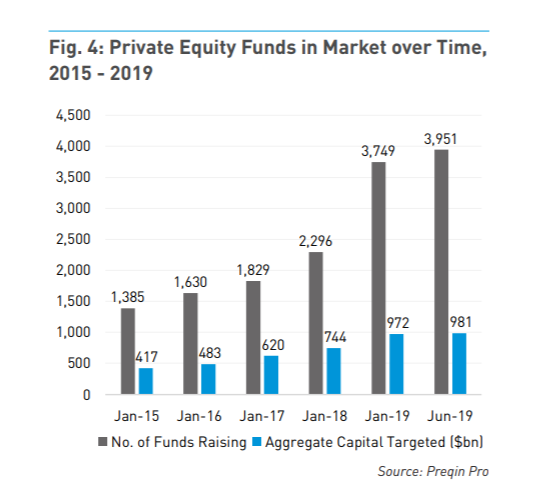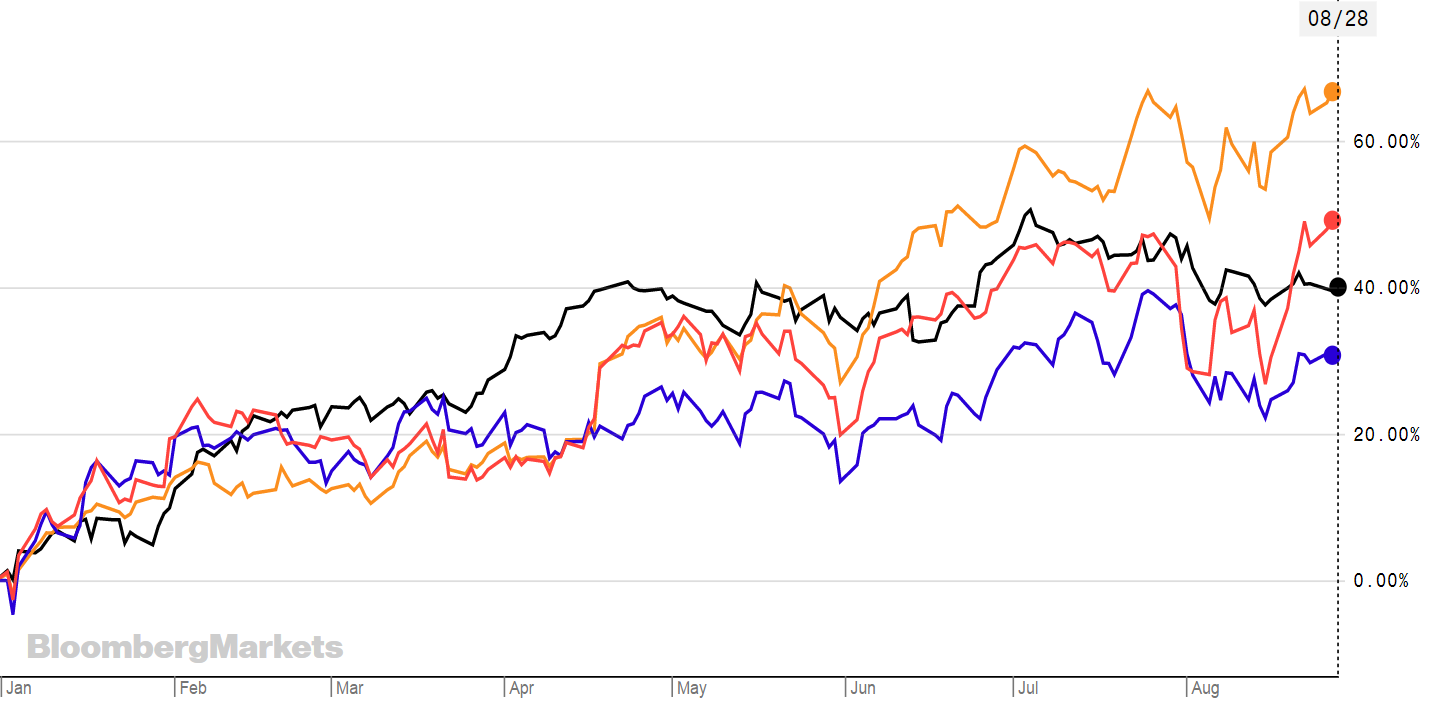Private equity ETFs might seem like a great idea. The access to the lofty returns of some of the large listed companies – some of the ETFs on offer have returned over 25% – that are typically only available to high net-worth investors is very attractive. However, do these ETFs offer true private equity investing?
Data from Preqin shows that there are more private equity funds coming to market than ever before.

Performance has also been good. Preqin’s Q2 Private equity update reported that: “Private equity funds collectively have posted strong, double-digit annual returns across all horizon periods examined.”
The industry has typically been the preserve of the wealthy. It invests in non-public companies through privately negotiated transactions. This automatically means it’s a relatively opaque market and investing in it means your money is likely to be tied up for several years. It also means there is more risk associated with it.
Despite this, it’s a sector that is becoming increasingly popular with good returns and the ability to weather recessions well. Academic studies have shown that not only has the average private equity fund outperformed the S&P 500 in recent decades, they weather recessions reasonably well. This is according to the Kellogg School of Management (KSM) at Northwestern University that found that private equity companies are able to manage recessions better than many other asset classes.
The FT published an article recently arguing that retail investors should be able to access the lofty returns from private equity although the current rules are there to protect them. “The rules are designed to protect retail investors from being burnt by risky strategies, charged unexpectedly high fees or locked into investments that they cannot sell. But studies suggest that such restrictions are misguided. A 2017 study by Voya Financial found that private equity investing reduces the risk of an investment portfolio through diversification.”
There is one-way investors can get some exposure to private equity, but it is listed and there is a difference. Listed private equity companies are those that have listed on the exchanges but invest in unlisted businesses.
These include the likes of 3i Group (in black), Apollo Global Management (in red), Blackstone Group (in orange) and KKR (in blue). The performance of these companies is shown YTD in the graph below.

Source: Bloomberg
On the London Stock Exchange there are only three ETFs on offer, the other ETF discussed is available on the Borsa Italiana.
While these funds track listed private equity the returns may not always be the same as unlisted private equity.
Peter Sleep, senior investment manager at 7IM, said: "Listed private equity can be viewed as equities on steroids or geared equity. Listed private equity companies tend to have a lot of debt and they are leveraged to the business cycle, so they are very volatile indeed.
"Morningstar, who help us with our long-term assumptions, estimates the long-term volatility of the LPX index at 27%, which compares unfavourably with the S&P 500 index with long-term volatility of about 18%.
"For example, from March 2008 to March 2009 the X-trackers LPX PE ETF fell by nearly 75%. As you might expect, the Xtrackers LPX PE ETF is very highly correlated to the major equity markets and offers few diversification benefits.
"There is a potential for higher returns though if you can stomach the extremely high volatility of the asset class. Most academic studies suggest private equity has a beta to public markets of about 1.2-1.4."
There are also not that many liquid listed private equity firms. The X-trackers ETF, which tracks the LPX 25 has a varied mix of shares including venture capital and private equity firms mentioned above and venture capital companies like IP Group in the UK (a stock where Neil Woodford is a large shareholder) and Rocket in Germany.
The LPX index is quite concentrated with the largest five companies accounting for nearly 50% of the index. The iShares ETF is based on a similar S&P index, but with 50 stocks which dilutes the concentration, but performs in a similar way.
Sleep adds: “AQR estimates the US private equity market at $2tn - $3tn (not the listed private equity market). AQR suggests that over the long-term the average long term US private equity fund has returned 2-3% more than public markets, although most of those gains came from funds with vintages 1996-2005 and there is a debate about whether returns of 2-3% over the S&P 500 are achievable in the future as the US private equity industry has generally not outperformed the S&P 500 since 2006.”
There are other reasons why performance ought to be scrutinised, which is largely attributable to the low base from which they have started after falling so heavily at the end of 2018.
Sleep also comments that true private equity, that is unlisted, still generates similar returns to listed private equity. “Because it is not marked to market like listed private equity, it gives the impression of being less volatile to the public equity markets and less correlated. It is also, clearly, less liquid. It is very difficult to sell a share in a private equity fund.”
This raises the point that the lack of liquidity, price transparency and the appearance of lower volatility may well be worthwhile because it prevents people selling out during corrections in public markets.
While private equity ETFs may seem attractive and a way to access private equity-like returns, investors should be aware of what they are buying and the risks associated with it.
iShares (IDPE) and (IPRV) was launched in 2007 and tracks the S&P Listed Private Equity Index. IDPE has returned 2.82% this year, 9.71% over one year and 12.04% over three years, respectively. However, the sterling version (IRPV) has done better returning 7% this year, 9.33% over one year and 18.50% over three years. It costs 0.75% and has assets of $425m.
As mentioned above, Xtrackers XLPE, which has been around since 2008 has a management fee of 0.50% and an expense ratio of 0.7%. It is also ‘synthetic’, which means the ETF uses a swap to get exposure to the index. It has €138m in AUM.
The other ETF on offer on the Borsa Italiana is Lyxor’s Privex UCITS ETF (PVX), it has €22.5m in AUM and is also been around since 2007.
XLPE
0.7% (expense ratio)
(IDPE)
(IPRV)
PVX FP
€22bn
ETFTERYTD RTNINDEXXtrackers LPX Private Equity Swap UCITS ETF0.50% (m’ment fee)31.73%LPX Major Market Total Return IndexiShares Listed Private Equity UCITS ETF USD Dist0.75%26.72%S&P Listed Private Equity IndexiShares Listed Private Equity UCITS ETF USD Dist0.75%31.77%S&P Listed Private Equity IndexLyxor Privex UCITS ETF (Borsa Italiana)0.7%21.43%PRIVEX index
Source: Bloomberg & LSE





